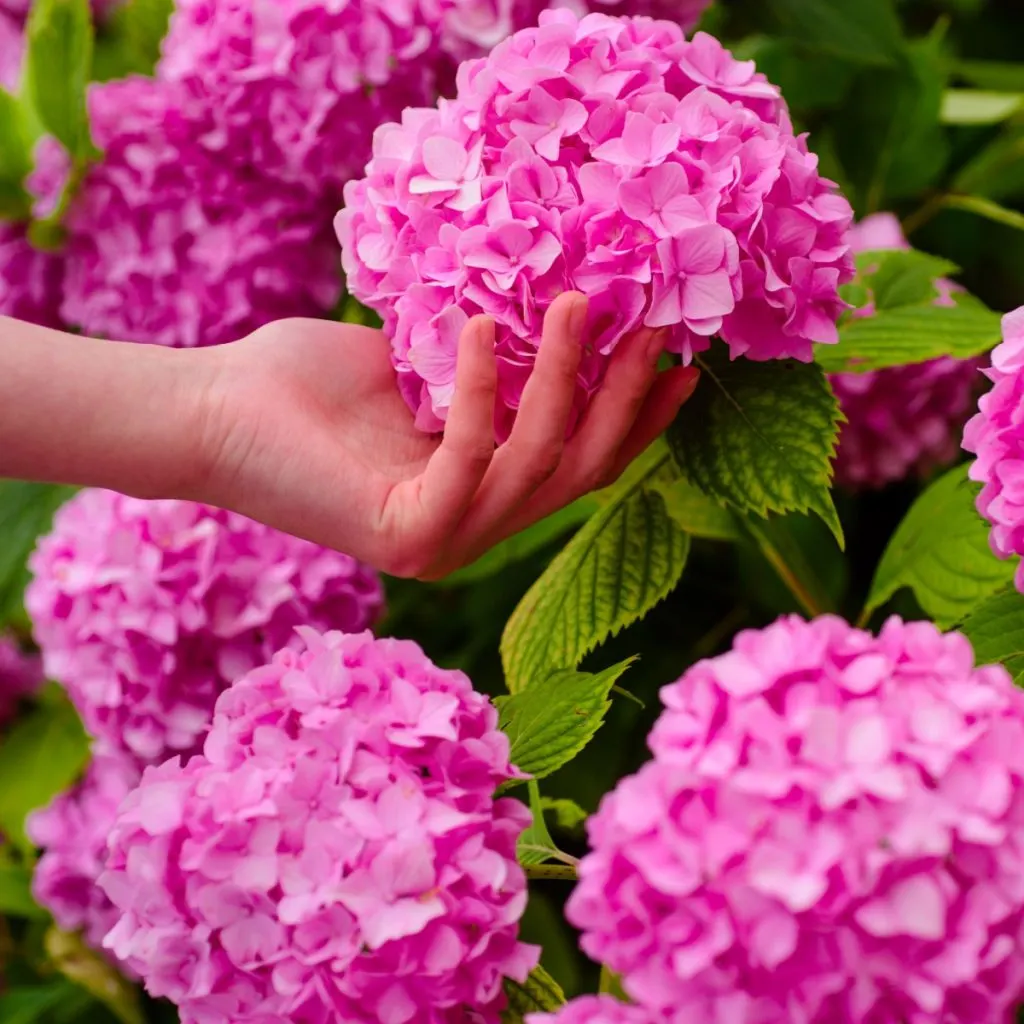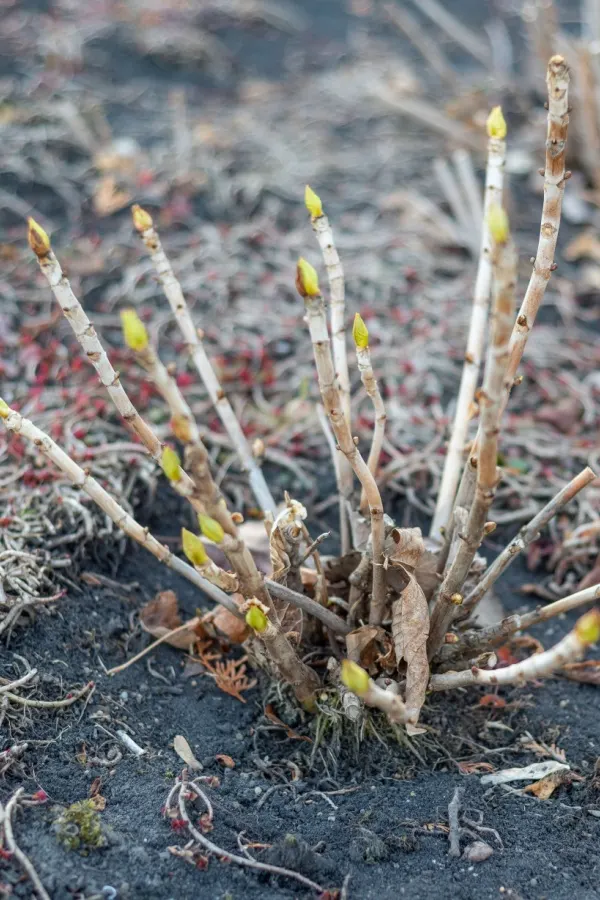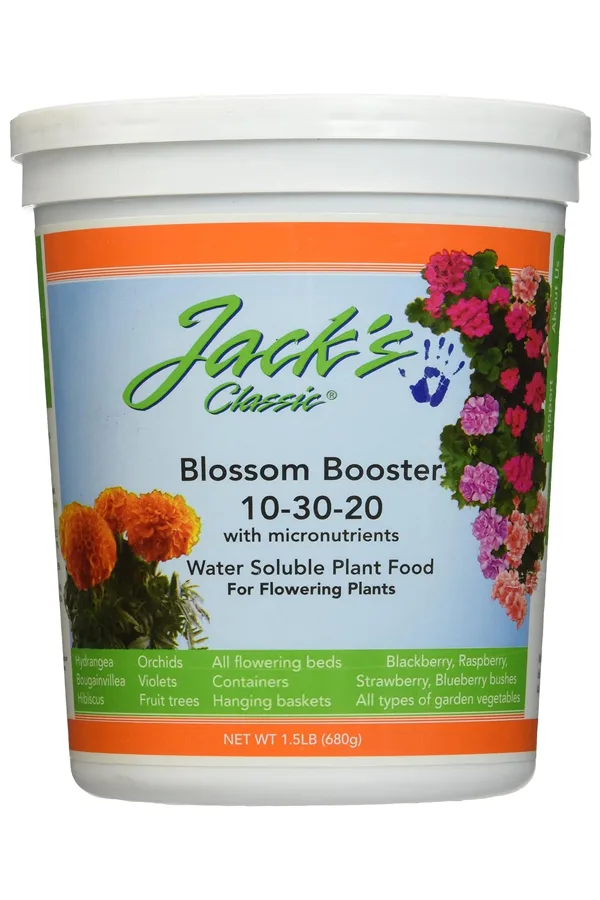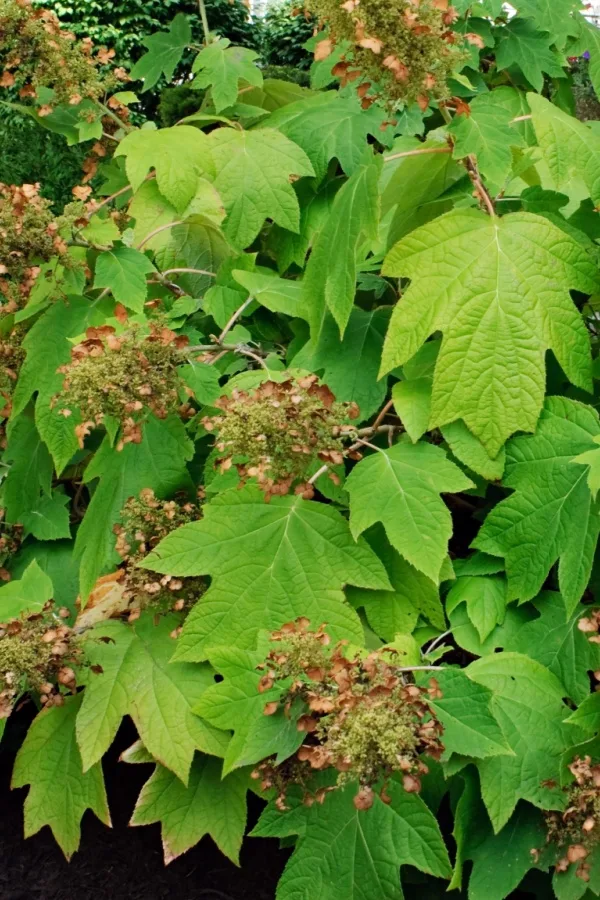Looking for a few key tips to fertilize your hydrangeas this spring for bigger blooms than ever this year? One of the easiest and best ways to get your hydrangeas to grow and bloom stronger than ever is to give them the fertilizer they need – just when they need it!
Hydrangeas are one of the most well known flowering perennials – and they continue to grow in popularity each year. Their ability to grow in a wide variety of locations and climates makes them perfect for homeowners to add flowering beauty and color almost anywhere.
Their big clusters of vibrant blooms are not only a way to add big interest to your property, but they are also great for drawing in pollinators in droves. However, unfortunately, getting their blooms to appear consistently is often a source of frustration for many gardeners.

It can be heartbreaking to watch your hydrangeas fill in with thick foliage, any yet only produce a few tiny blooms. Or even worse, none at all! While it might seem overwhelming to figure it all out, at the end of the day, most issues often come back to one simple issue, improper fertilizing.
Fortunately, fertilizing hydrangeas doesn’t have to be difficult or complicated. In fact, once you know a few simple tips for powering these amazing perennial bushes – it’s actually quite easy to give them just what they need to flourish.
How And When To Fertilize Hydrangeas In The Spring – And Summer!
To get your hydrangeas to fill out with lush, green foliage and produce its signature massive blooms, it takes energy and nutrients. And the best way to make sure your bushes have the power they need to do just that is to provide it to them with fertilizer. But it actually needs to be given to them at two separate times – in the very early spring, and right before they bloom.
Although the process to do each is fairly easy and straightforward, each time frame does require a different method of fertilizing. And it’s important to get each separate fertilizing just right to get the most from your hydrangeas.
Late Winter / Early Spring Fertilizing
The first critical stage of fertilizing occurs right before or as your hydrangeas start to come out of dormancy in very late winter or early spring.
Fertilizing at this point allows the plants to have sufficient energy to really load up on healthy, thick foliage. It’s this foliage that feeds the plant throughout the rest of the growing season through photosynthesis. But this dose of energy also helps the bush begin to store nutrients for blooming.

For this application, it’s all about giving the plant low and slow power. It’s very important at this stage to avoid giving too many nutrients at one time. Unfortunately, if a hydrangea gets too much energy at once – it will forgo later blooming for massive growth.
The Right Fertilizer For Late Winter Or Early Spring Fertilizing
There are a couple of different ways you can fertilize hydrangea plants in late winter or early spring. The first is to add a couple of inches of compost to act as an organic mulch around each plant.
Adding a thick 3 to 4 inch layer of compost around the entire root zone of each plant will provide them with a perfect, easily absorbed fertilizer. Compost is teeming with powerful nutrients and organic matter. And every time it rains or you water plants in the spring, they will get a low and slow dose of energy that leaches into their roots from the compost above.
Another option is to use an all-purpose slow-release granular fertilizer designed for hydrangeas around the base of your plants. Granular fertilizers release their energy over time as well for a low and slow feeding. Affiliate Link: GardenWise 8-4-8 Acidic Fertilizer for Hydrangeas
Avoid fertilizing with too heavy of a dose of granular fertilizer. More is not always better, especially with powering hydrangeas. Low and steady is much more effective at producing a healthy, strong plant.

As for which is better for hydrangeas, both compost and granular fertilizers work well. The choice is really up to the gardener. But one thing is for sure – no matter what you use – it’s important to feed your hydrangeas early!
Fertilizing Before Blooming
The second time you need to fertilize hydrangeas is right before they start to produce their blooms. The timing of this application will depend on the variety of hydrangea you are growing. But by applying it right before they flower, you can boost the blooming performance greatly.
If your plants bloom in late spring or early summer, you can apply the second dose of fertilizer right when they are starting to bud out in early summer. For plants that bloom in late summer or early fall, wait to apply the second dose of fertilizer until they begin to bud in late summer.
The Best Choice For Summer Fertilizing
The goal with this dose of fertilizer is to produce massive amounts of huge, vibrant blooms. Unlike the spring fertilizer that is balanced, this time you need to give a higher dose of bloom powering nutrients.
When it comes to fertilizers, all have a set number of nutrients that are labeled as Nitrogen (N), Phosphorus (P), and Potassium (K). This is shown as N-P-K on the container or bag. A balanced fertilizer will have a ratio where the numbers are the same or very close – such as 4-6-4 or 10-10-10.

Nitrogen is key for foliage growth and is more important with the late winter / early spring feeding. For blooming, however, it’s important to choose a fertilizer with a higher dose of phosphorous and potassium in the ratio.
A fertilizer with a ratio of 10-30-20 is ideal for hydrangeas before blooming. This gives plenty of phosphorous and potassium power to produce bigger and brighter blooms. In addition, it will help set additional blooms throughout the blooming period. (Affiliate Product Link: Jack’s Classic Blossom Booster 10-30-20)
Pruning For Blooming – How To Fertilize Hydrangeas In Spring
In addition to fertilizing, proper pruning can also have a huge impact on the blooming success of your hydrangeas. The variety of hydrangeas you are growing and their blooming time will control when you should or shouldn’t prune.
In general, hydrangeas do not require heavy pruning. Avoid heavily pruning any variety of hydrangeas to keep blooming at maximum potential. Instead, only prune back as much as needed to maintain the desired shape and size.
Most hydrangea varieties should only be pruned immediately after they are done blooming. This is because they create the following season’s blooms on the new growth created after the flowering period is complete.

Oakleaf, Bigleaf, and climbing hydrangeas all fit into this category. If you prune back these hydrangeas in late fall or early spring, you remove the new growth and future blooms.
Other varieties such as Panicle and Smooth hydrangeas create their blooms on the same year’s new growth. You can prune these varieties in late winter or early spring with no reduction in blooms occurring.
Just ensure that you prune them back while the plants are still dormant and before new growth has occurred. For more in-depth information on pruning, be sure to check out our article, “How To Prune Hydrangeas – What To Do With Hydrangeas After They Bloom”
Here is to fertilizing and pruning your hydrangeas for success this year. And – to bigger and better blooms than ever this year!
Simple Garden Life
Follow Our Facebook Page For Even More Great Tips! Simple Garden Life Facebook Page
Simple Garden Life is a website dedicated to keeping gardening fun, simple and enjoyable! We publish two new articles each week along with a new garden podcast episode every two weeks. This article may contain affiliate links.
